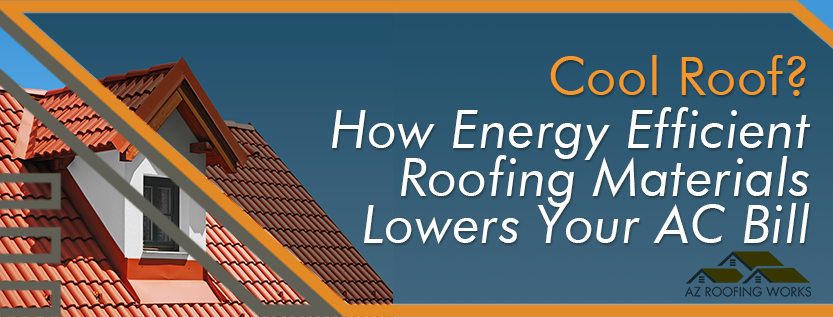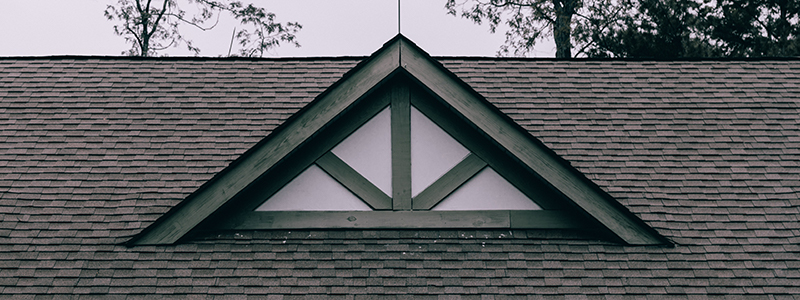

Cool roofs are revolutionizing the way we think about energy-efficient roofing. They are not just another roofing option; they are a significant step toward sustainability in home design. A cool roof is a roofing system designed to reflect solar radiation, significantly lowering the absorption of heat. This simple yet impactful technique leads to substantial energy savings and a more comfortable living environment. Many homeowners face high energy bills during the summer months. Cool roofs offer a solution by reducing the need for air conditioning, improving energy efficiency, and lowering energy bills. This article will explore the key benefits of cool roofs, examining their impact on energy efficiency, environmental sustainability, and financial savings. We’ll also delve into the types of cool roofing materials, installation considerations, and long-term value proposition.
The Cool Roof Revolution: A Sustainable Solution for Energy Savings
Understanding the Fundamentals of Cool Roofing
Cool roofs are specially designed roofing systems that reflect a significant portion of solar radiation. Unlike traditional roofing materials that absorb most of the sun’s energy, cool roofs are formulated to redirect heat, thereby reducing the amount of heat that enters a building. This seemingly small difference translates into substantial energy savings, making cool roofs a smart investment for environmentally conscious homeowners and businesses. Studies have shown that cool roofs can help decrease the energy consumption of a home for cooling by up to 40%, which is a significant achievement, considering the increasing costs of energy and the imperative for reducing environmental impact.
The Problem with Traditional Roofing
Traditional roofing materials, such as asphalt shingles, are designed to absorb a considerable amount of solar radiation. When the sun’s energy is absorbed by the roof, it heats up the home, driving up energy bills for cooling. This heat absorption cycle is not only energy-inefficient but also has a detrimental impact on the local environment by increasing the demand for energy and contributing to higher greenhouse gas emissions.
Cool Roofing as a Solution
Cool roofing is a revolutionary approach that directly addresses these issues. By reflecting sunlight, cool roofs help keep homes and buildings cooler in the summertime, minimizing the need for air conditioning. This translates to substantial energy savings, lower utility bills, and a reduced carbon footprint. This innovative technology significantly contributes to sustainable construction practices and demonstrates a clear pathway towards creating more eco-friendly communities.
The Structure of This Article
This article will examine the critical components of cool roof technology, outlining the benefits, types, and applications of cool roofing materials. We will delve into the environmental and financial implications, helping readers understand the complete impact of embracing cool roofing. We will also provide actionable steps and resources to help readers integrate cool roofing into their homes or businesses. This comprehensive guide aims to equip readers with the necessary knowledge and information to make informed decisions.
Types of Cool Roofing Materials and Their Benefits
Reflective Coatings and Their Impact
One key component of cool roofs is reflective coatings. These specialized coatings are applied to traditional roofing materials, significantly increasing their reflectivity. These coatings can reflect up to 90% of solar radiation, preventing heat absorption and thus keeping homes cooler. The application process is relatively straightforward and can be applied to existing roofs, minimizing demolition and construction time.
The Role of Light-Colored Roofing Materials
Light-colored roofing materials such as white, gray, and light-tan tiles are also effective in reflecting solar radiation. These materials have a high solar reflectance index (SRI), enabling them to reflect a significant portion of incoming sunlight. This reflection directly combats the heating effect on the home and can have a measurable effect on your energy bills.
Specific Examples of Cool Roofing Materials
Several types of roofing materials are available, each with its own strengths and weaknesses. Clay tiles, certain types of metal roofing, and special coatings are some examples. It’s important to research specific products, considering factors like durability, cost, and long-term maintenance.
The Economic Advantages of Cool Roofing
Reduced Energy Costs and Long-Term Savings
Cool roofs offer considerable long-term financial advantages due to their impact on energy consumption. A cool roof will translate directly to a substantial reduction in your energy bills. Studies indicate that replacing a traditional roof with a cool roof can result in notable energy savings over time. Over a decade or more, these savings can substantially outweigh the initial cost of installation. The reduced strain on air conditioning systems also extends the lifespan of the HVAC unit, further lowering overall operational costs.
The Return on Investment (ROI)
The financial benefits of cool roofs often translate into a positive return on investment (ROI). The savings in energy costs over the life of the cool roof typically outweigh the initial investment, making it a financially sound decision. A cool roof can add significant value to your property, potentially boosting your home’s resale value. Homeowners are increasingly recognizing the economic advantages of adopting sustainable building practices, and cool roofs are becoming an attractive option for those seeking long-term financial gains.
Factors Influencing the ROI
Several factors can influence the ROI of a cool roof, including the climate, the specific roofing material used, and the size of the building or home. A thorough cost-benefit analysis can provide a clear picture of the long-term savings potential of installing a cool roof. Consult with a professional to determine the potential ROI for your specific needs.
Environmental Benefits of Cool Roofing
Reduced Carbon Footprint
Cool roofs offer substantial environmental benefits by reducing energy consumption. Lower energy use directly translates to lower greenhouse gas emissions, helping mitigate climate change. The reduction in energy consumption reduces reliance on fossil fuels, which in turn benefits the environment in the broader community and our planet’s health and ecosystem.
Impact on Local Climate
Cool roofing systems are becoming a sustainable strategy for minimizing the urban heat island effect in cities. Reflective surfaces help reduce the overall temperature of urban areas, contributing to more sustainable and livable spaces. This localized benefit promotes both the wellbeing of the community and sustainable construction.
Installation and Maintenance Considerations
Choosing the Right Contractor
Selecting a reputable contractor is essential for a successful cool roof installation. Look for contractors with experience in cool roof systems, ensuring proper installation and materials. A professional installation will greatly enhance the longevity and efficacy of the cool roof system.
Maintenance Tips for Long-Term Effectiveness
Regular maintenance is critical for a cool roof’s longevity and effectiveness. Promptly address any damage or deterioration, preventing potential leaks or degradation of the reflective properties. Prompt attention to maintenance helps maintain the cool roof’s efficiency and reduce future repair costs.
Additional Considerations for Different Roof Types
Some roofing materials might not be compatible with cool roof technologies. Different roofing materials react differently to the process of applying reflective coatings. Consulting with a professional will ensure your cool roof meets your needs and expectations.
Cool Roof Technology and Future Trends
Innovations in Reflective Materials
Research and development in cool roof technology continue to progress. Innovations in reflective materials are creating even more energy-efficient roofing solutions. Ongoing developments in reflective coatings and new material compositions will further improve the effectiveness of cool roofs in the coming years. New cool roof technologies will enhance their long-term sustainability, value, and versatility.
Integration with Smart Home Technology
The integration of cool roofs with smart home technology is another exciting area. This allows for automated temperature control and energy management, further optimizing energy efficiency and providing homeowners with unprecedented control over their homes’ energy use. The integration of smart home technology allows for improved responsiveness to optimize energy efficiency.
Case Studies and Real-World Examples
Success Stories from Different Climates
Numerous case studies highlight the effectiveness of cool roofs in various climates and circumstances. These case studies illustrate the energy-saving potential of cool roofs in diverse regions, making them an effective choice for homes across different geographical locations.
Quantifying the Impacts in Specific Locations
Many municipalities are actively promoting the use of cool roofs as part of sustainable urban planning. By using various case studies, we can quantitatively assess the impacts of cool roofs in different climates, demonstrating their positive impact on energy savings and environmental sustainability.
The Growing Adoption of Cool Roofing
The growing adoption of cool roofing systems across the country signifies the increasing recognition of their benefits. The wide acceptance of cool roofing is a testament to the efficiency, effectiveness, and long-term value.
Conclusion
Call to Action
Discover the advantages of a cool roof for your home or business. Schedule a consultation with a trusted professional to explore the potential energy savings and environmental benefits. Get started today and experience the difference a cool roof can make.
Call to Action
Consider incorporating cool roofs into your next construction project or home renovation. This can directly impact your financial well-being and leave a positive impact on the environment. Let’s embrace these innovative practices for a sustainable future.
Frequently Asked Questions
What are the long-term benefits of installing a cool roof?
Installing a cool roof offers a multitude of long-term advantages. Beyond the immediate energy savings, cool roofs contribute to a more comfortable indoor environment, minimizing the need for air conditioning, leading to substantial energy bill reductions over time. Furthermore, they often increase the lifespan of the roof itself and add to the curb appeal of your property. These combined advantages result in a significant return on investment, providing a positive impact on both your financial well-being and your environmental footprint.
How do cool roofs impact my energy bills?
Cool roofs significantly reduce energy consumption for cooling homes and buildings by reflecting sunlight, lessening heat absorption. This leads to a noticeable decrease in the demand for air conditioning, which directly translates into lower energy bills. Depending on the climate and the specific type of cool roof installed, homeowners and business owners can expect substantial savings on energy costs, often exceeding 20 percent or more in particularly hot climates. This substantial cost-saving impact makes cool roofs a smart investment for anyone seeking to reduce energy waste.
What are the environmental benefits of choosing a cool roof?
Choosing a cool roof directly supports environmental sustainability. The reduction in energy consumption leads to a decrease in greenhouse gas emissions, thereby mitigating climate change. Furthermore, the durability of well-made cool roofs can extend the lifespan of a property, lessening the need for replacements that can often cause more environmental impact. When considering sustainable options for your home or business, cool roofs are a compelling and eco-friendly choice that benefits both your finances and the planet.
In conclusion, cool roofs are a game-changer for energy efficiency and environmental sustainability. By opting for a cool roof, homeowners and businesses can significantly reduce their energy consumption, lowering utility bills and contributing to a healthier planet. This proactive step is an investment in the future, offering long-term cost savings and a clear path towards creating more sustainable homes and communities. Ready to explore the benefits of cool roofing? Contact a reputable roofing contractor today for a free consultation and discover how you can experience a cooler, more efficient home.